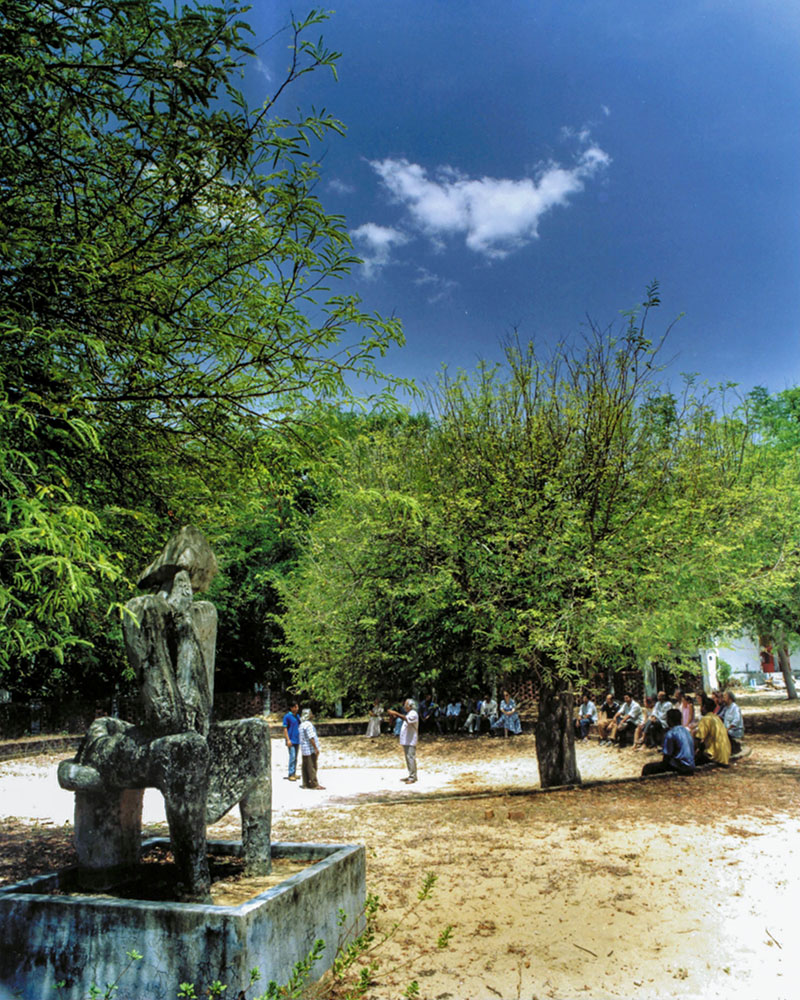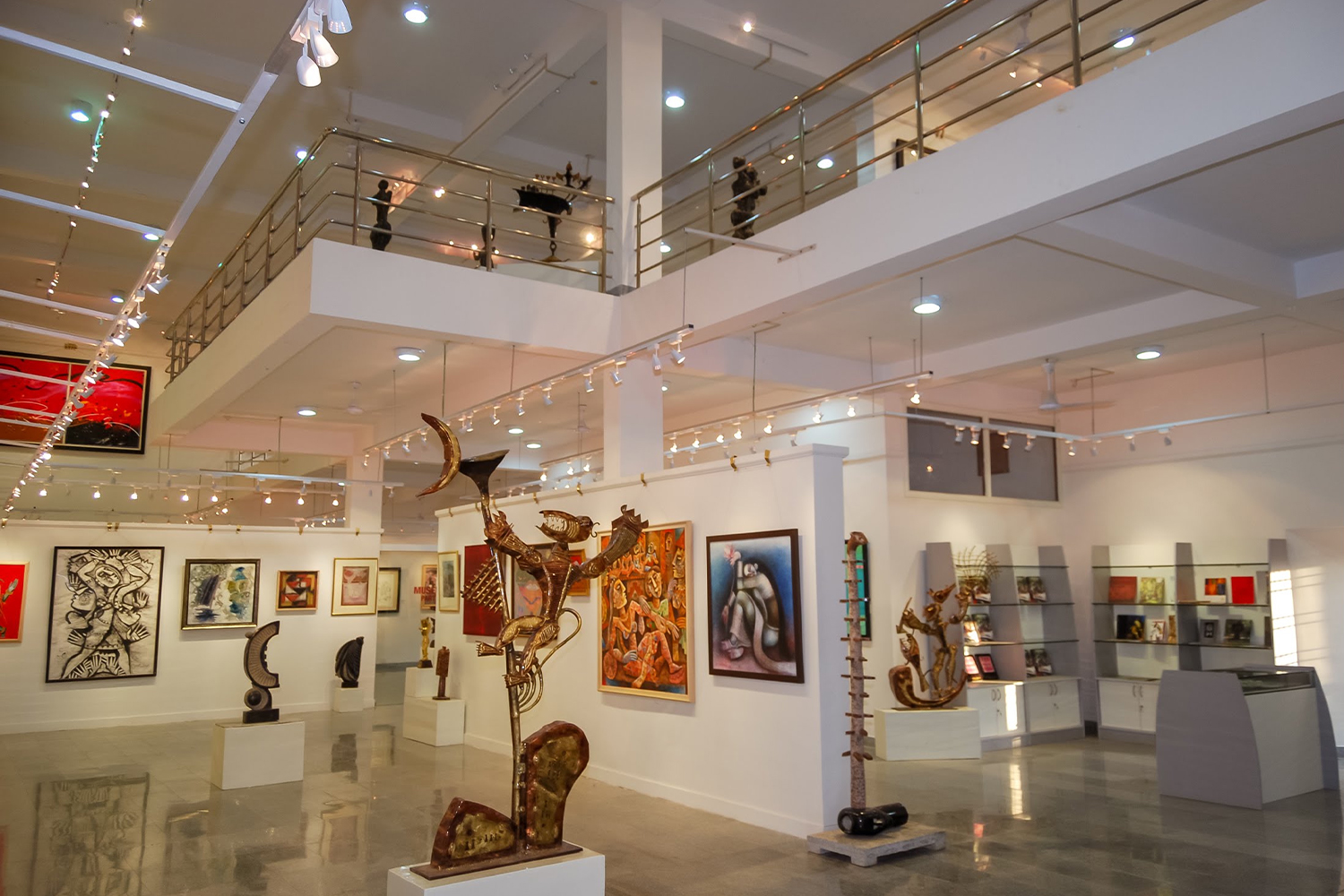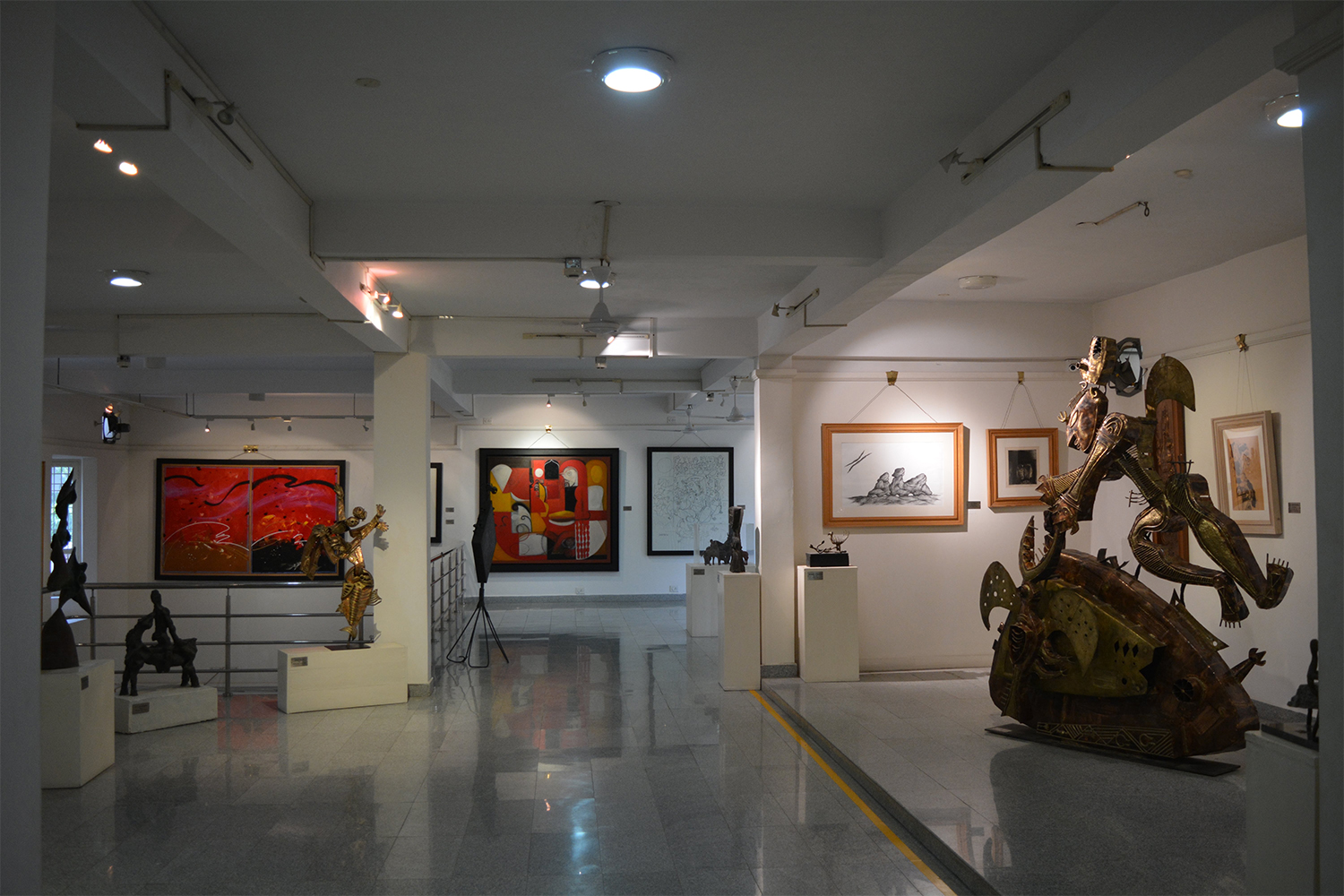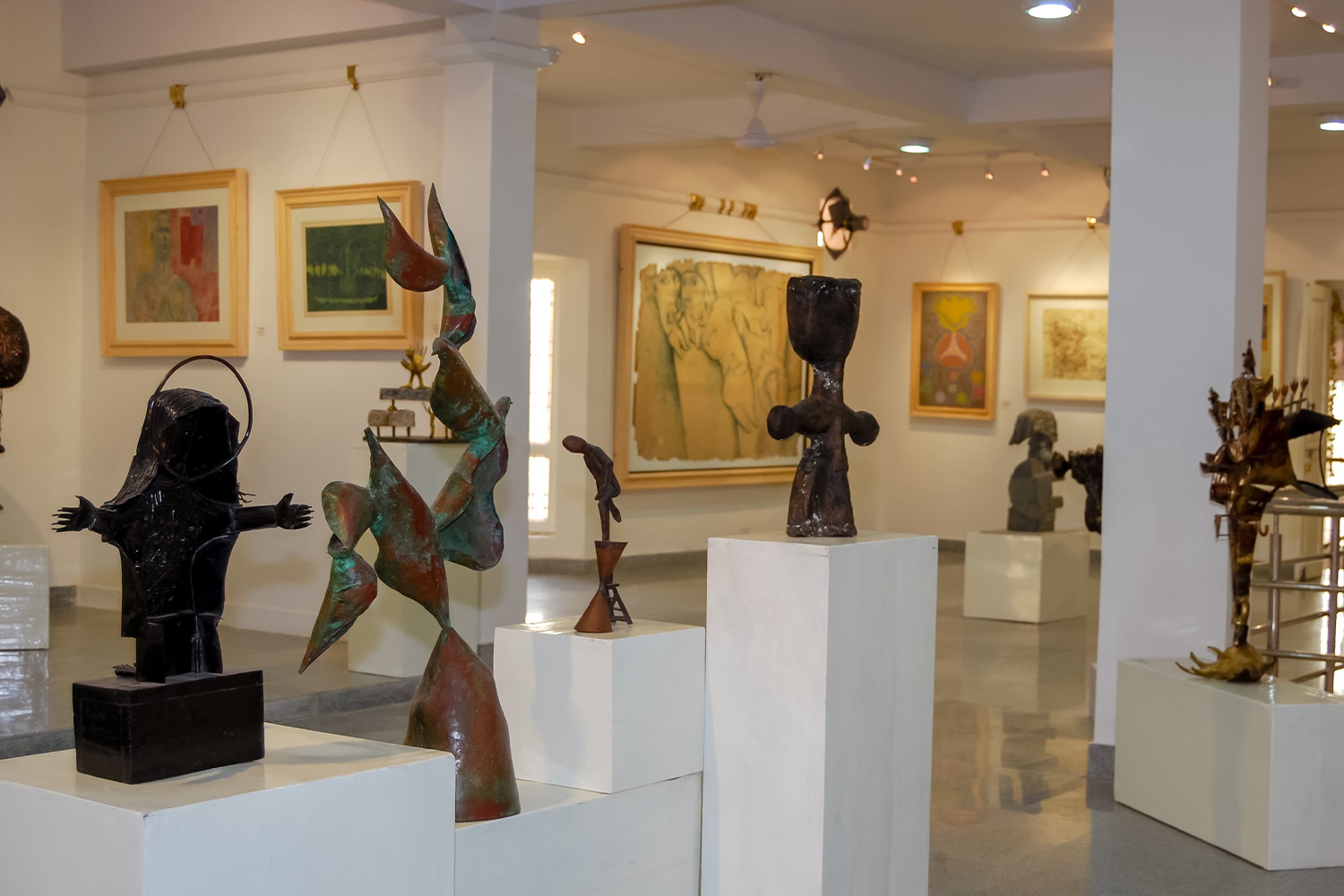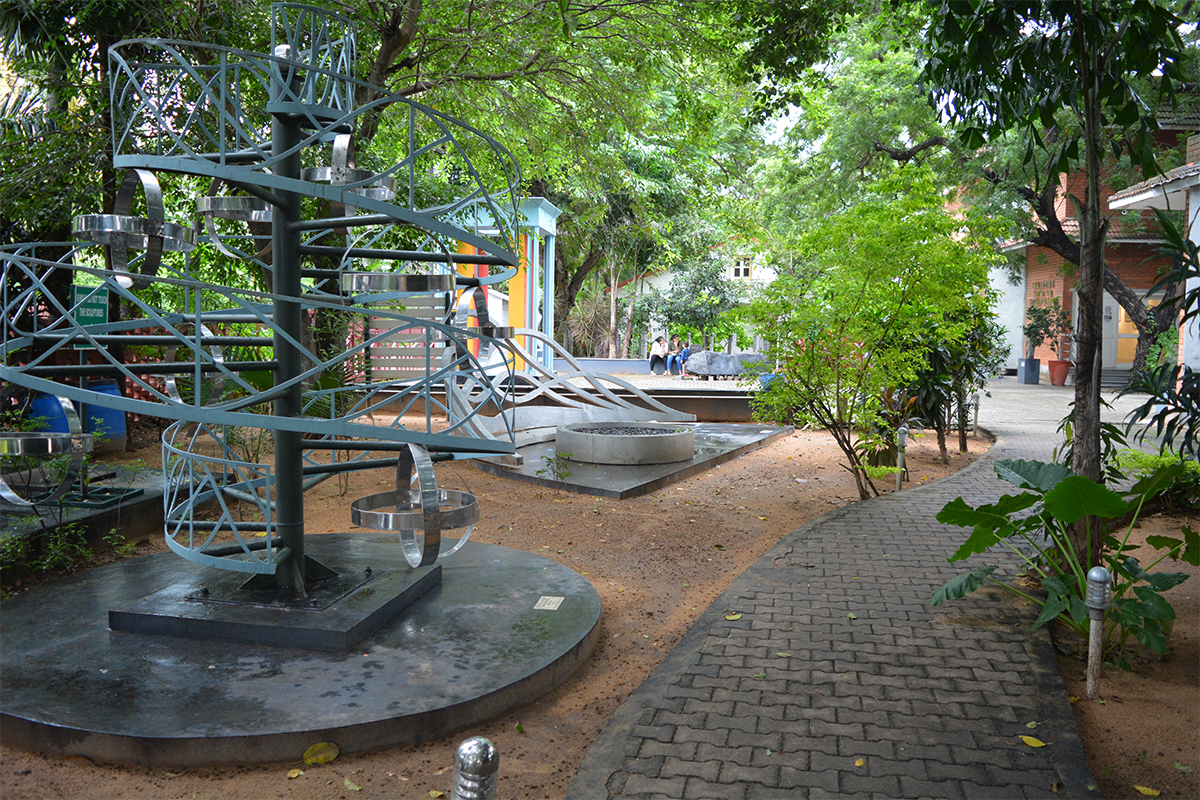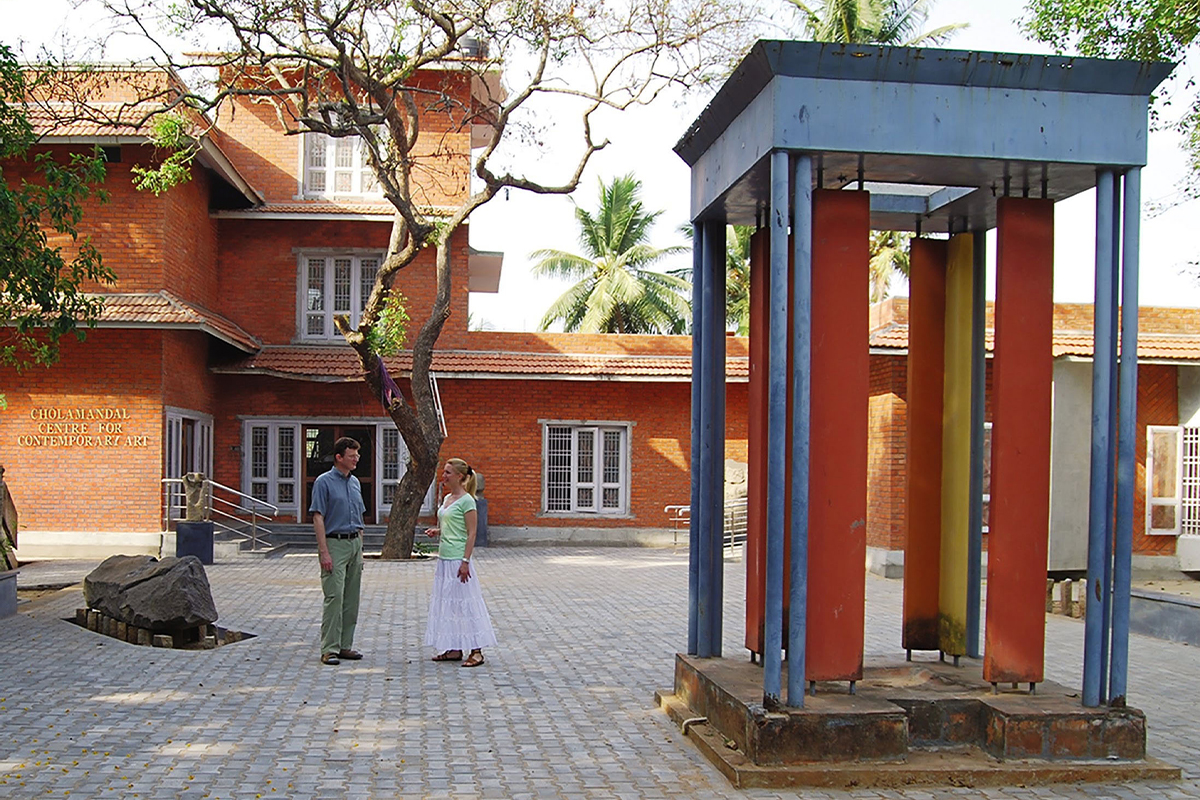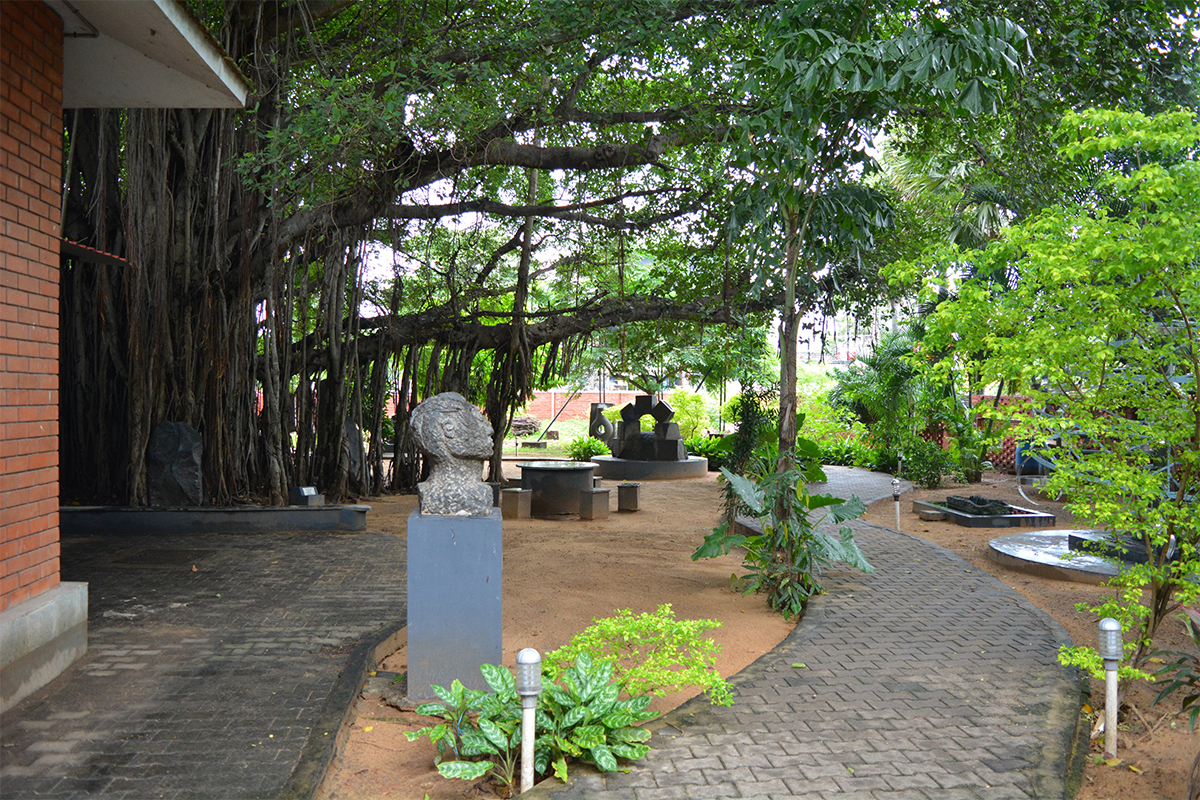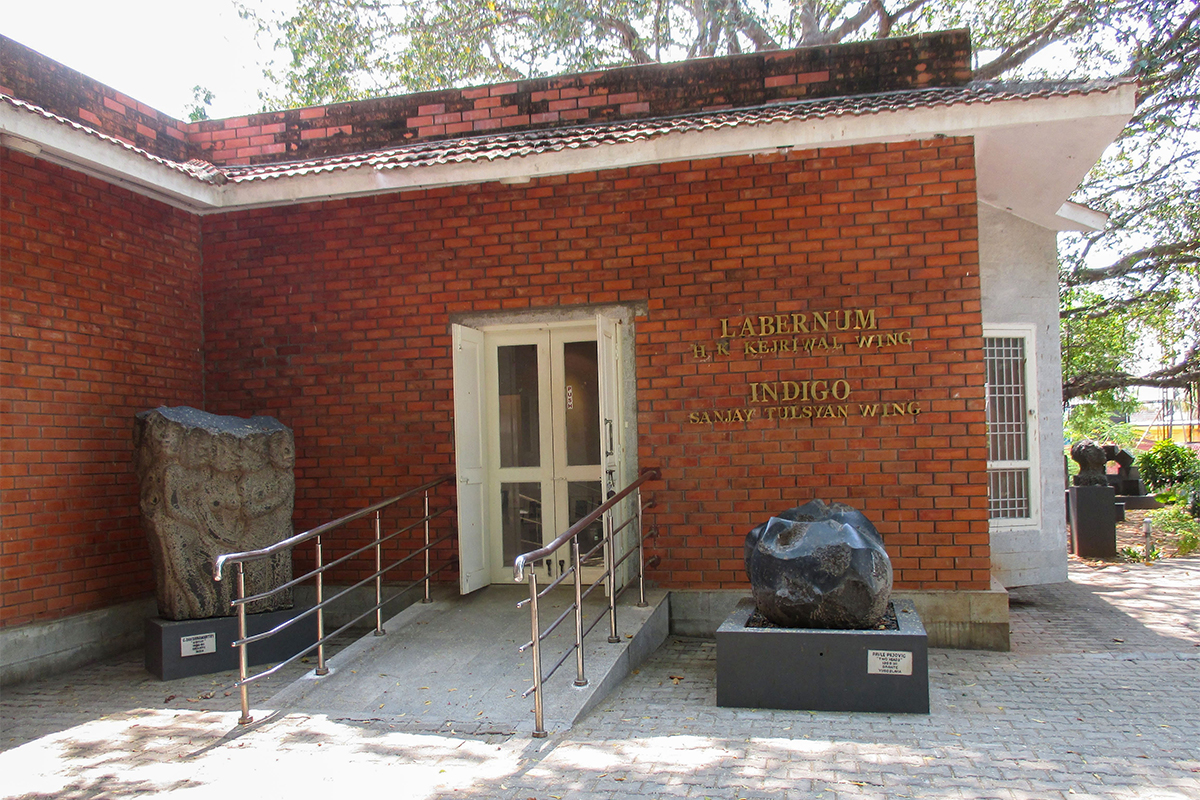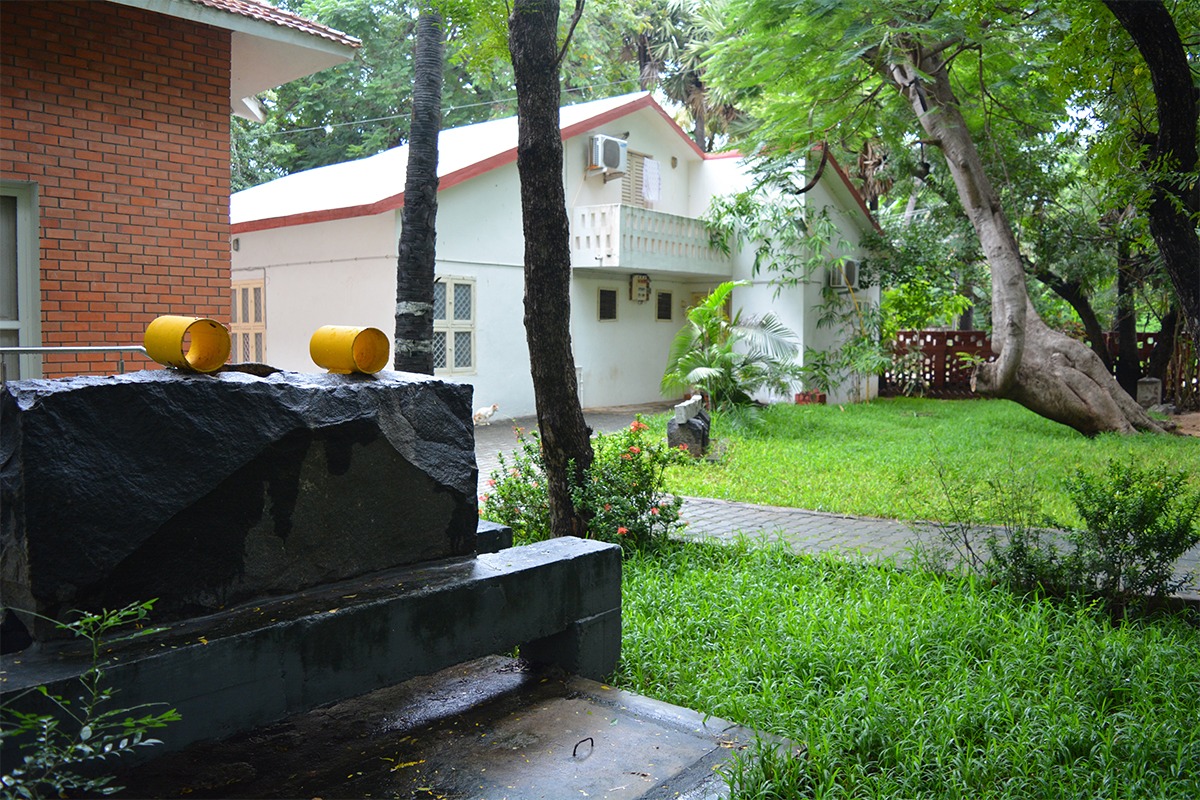ARTICLE
Cholamandal Artists’ Village
Registered under the AHA, the cooperative began with thirty artists, including Paniker, SG Vasudev, Anila Jacob, MV Devan, KV Haridasan, Arnawaz Driver, J Sultan Ali, V Viswanathan, L Munuswamy, M Senathipati, Akkitham Narayanan and Reddeppa Naidu. Then a mostly barren plot of land away from the city, Cholamandal had little basic infrastructure in its early years. The artists lived and worked here in simple thatched-roof structures and spartan conditions, devoting part of their time to producing craft goods for sale alongside their artistic practice. These were sold through the AHA, now headquartered within Cholamandal, and the earnings went into a collective fund from which the artists sustained themselves. A percentage of the collective earnings was dedicated to creating and maintaining communal infrastructure and studios, with visiting artists making specific contributions such as a pottery wheel and kiln, and the German government funding a guest apartment in a gesture of goodwill. Apart from a few such inputs, Cholamandal has remained unique among collective artistic initiatives in the country in sustaining itself without aid from private or government institutions.
Spread over 10 acres, today Cholamandal houses about forty residences; artist studios; guest accommodation; workshops; offices for the AHA; galleries; and an open-air theatre — named ‘Bharathi’ after the Tamil nationalist writer Subramania Bharathi. Within the Cholamandal Centre for Contemporary Art gallery is hosted the Museum of the Madras Movement, which was established in 2009 to display the work of the movement’s pioneering artists. A sculpture park hosts works from visiting international artists, many of whom came to Cholamandal on cultural exchange programmes. Cholamandal also houses Golden Oriole, a workshop and residency space, and two commercial galleries, Indigo and Laburnum.
In 2014, they hosted Contemporary Miniatures, a collection of small-format artworks by artists from across the country, paying tribute to the Progressive Painters’ Association and Paniker, who popularised the format to make art more accessible to the wider public. Cholamandal and its artists have received international visibility through platforms such as the Venice Biennale, the Paris Biennale and the Commonwealth Art Festival, London. In 2004, Cholamandal: An Artists’ Village was published: edited by Josef James, the book compiles a history of the cooperative, and essays on each of its members.
While the AHA continues to oversee the colony, few of the original residents remain, with most having moved away or died. Its more recent or present-day members include P Gopinath, A Selvaraj, D Venkatachalapathy, Rajasekharan Nair and Richard Jesudoss. In recent decades Cholamandal has attracted some criticism for remaining insulated with regard to the practices and mindset of its resident artists, and their perceived lack of openness to newer ideas and artists. It does, however, function as a tourist site, with its newer galleries in particular attempting to attract contemporary audiences.
Bibliography
Bhagat, Ashrafi S. “Drifting Threads: Cholamandal Artists’ Village Over Fifty Years.” Critical Collective. Accessed July 20, 2021. https://criticalcollective.in/SearchResult.aspx?search=Cholamandal.
Brittney. “Celebrating 50 Years of Contemporary Art with the Cholamandalam Artists’ Village in Chennai – Interview.” Art Radar, April 16, 2018. Accessed October 16, 2023. https://artradarjournal.com/2018/04/16/the-cholamandalam-artists-village-and-1×1-of-a-kind-in-chennai-interview/.
Brown, Rebecca M. “KCS Paniker’s Painterly Deflections.” South Asian Studies: Society for South Asian Studies, June 2021. https://doi-org.ezproxy.cul.columbia.edu/10.1080/02666030.2021.1922208.
Cholamandal Artists’ Village. “About Us.” Accessed September 24, 2021. https://www.cholamandalartistvillage.com/aboutus.html.
Cholamandal Artists’ Village. “Paintings from the Museum of Madras Movement.” Google Arts & Culture. Accessed July 19, 2021. https://artsandculture.google.com/exhibit/paintings-from-the-museum-of-madras-movement/dwISFwP4POwpLA?hl=en.
James, Josef. “An Artists Village.” Lalit Kala Contemporary, September 1987. https://www.sahapedia.org/sites/default/files/Lalit%20Kala%20Contemporary%2035.pdf.
James, Josef, ed. Cholamandal: An Artists’ Village. India: Oxford University Press, 2004.
Kinzer, Stephen. “Arts Abroad: In India, Pioneers of Modernism Savor Their Success.” The New York Times, January 29, 1998. Accessed October 16, 2023. https://www.nytimes.com/1998/01/29/arts/arts-abroad-in-india-pioneers-of-modernism-savor-their-success.html.
Ramnarayan, Gowri. “Brush With Peace.” The Hindu. Accessed September 24, 2021. https://web.archive.org/web/20041211092311/http://www.hindu.com/thehindu/mag/2004/07/18/stories/2004071800020100.htm.




